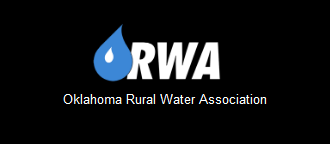8 Most Expensive Loan Servicing Mistakes (and How to Never Make Them Again)
Every loan servicer has a horror story. Maybe it's the time a decimal point error turned a $1,000 payment into $10,000, triggering months of corrections and a borrower complaint to the CFPB. Or perhaps it's that insurance policy that expired on a Friday, followed by a fire on Saturday, transforming a secured loan into a total loss.
These cautionary tales shared at industry conferences represent a harsh reality: loan servicing mistakes can destroy years of profit in a single moment. Yet despite their devastating potential, the same costly errors continue plaguing institutions across the country, often in frustratingly predictable patterns.
The good news? Every one of these expensive mistakes is entirely preventable with the right loan servicing software solutions. Let's examine the eight most costly servicing errors and, more importantly, how modern technology ensures they never darken your doorstep again.

1. The Payment Misapplication Nightmare
Picture this scenario: A borrower makes their regular monthly payment, but it's applied incorrectly. Maybe principal and interest get reversed. Perhaps the payment posts to the wrong loan entirely. Now multiply that single error by hundreds of loans, and you're looking at a compliance catastrophe that can cost millions in corrections, penalties, and damaged relationships.
Why does this keep happening? Because manual payment processing asks humans to be perfect mathematical machines, consistently applying complex waterfall logic across thousands of transactions. It's like asking someone to solve calculus problems for eight hours straight without making a single error. The human brain simply isn't wired for that level of sustained precision.
This is where automated payment processing becomes transformative. When systems like LOAN SERVICING SOFT handle payment applications, they follow configured rules with robotic consistency.
A payment arrives, the system identifies it, matches it to the correct account, and distributes funds according to your exact specifications. Every single time. No tired employee on a Monday morning accidentally reversing numbers. No confusion about which rules apply to which loan type.
Integrated with loan origination software, these systems create a seamless experience from the moment a loan is created through its entire lifecycle.
2. The Escrow Calculation Minefield
Here's a mistake that starts small but explodes into massive problems: miscalculating escrow accounts. Underestimate property taxes by a few dollars monthly, and suddenly you're facing borrower shortfalls, emergency payment demands, and RESPA violations. Overestimate, and you're managing complex refund calculations while fielding angry calls about why you're holding excess funds.
The traditional approach treats escrow analysis as an annual event, often performed in spreadsheets by overtaxed staff racing against deadlines. But property taxes change. Insurance premiums adjust. And that once-a-year calculation? It's already outdated the moment it's complete.
Modern servicing platforms flip this paradigm entirely. Instead of annual scrambles, they perform continuous analysis, monitoring for changes, and projecting shortfalls months in advance. When tax assessments update or insurance premiums change, the system knows immediately. This proactive approach transforms escrow management from a dreaded annual crisis into a smooth, ongoing process that keeps borrowers informed and accounts properly funded.
These same systems support trust accounting features that ensure every dollar is tracked accurately and compliantly across accounts.
3. When Insurance Lapses Turn Catastrophic
Of all servicing mistakes, few match the sheer devastation of missing an insurance expiration. One day you have a fully secured $500,000 loan. The next day, after the property burns down, you have an unsecured prayer and a lawsuit. The few days between policy expiration and forced-placement coverage? That's when disasters love to strike.
Insurance tracking fails because it relies on humans remembering to check thousands of expiration dates across multiple systems. Policies renew on different schedules. Carriers change. Borrowers switch agents. In the chaos of daily operations, critical expirations slip through the cracks with devastating consequences.
Integrated insurance tracking within comprehensive servicing platforms eliminates this risk entirely. Policy information lives directly within loan records, with automated monitoring that never sleeps. The system generates tasks and notifications at predetermined intervals, ensuring someone always follows up before coverage lapses. When borrowers provide updated policies, the system validates coverage adequacy automatically. It's the difference between hoping nothing bad happens and knowing you're protected.
4. Investor Distribution Disasters
Think investor distribution errors are minor accounting issues? Even small miscalculations compound into material discrepancies that trigger audits, breach servicing agreements, and can void entire contracts. That complex waterfall calculation you perform monthly? One mistake can unravel years of trust and send investors searching for new servicers.
Manual distribution calculations ask humans to execute multi-tiered waterfalls with various triggers, reserve requirements, and distribution schedules. The complexity resembles juggling flaming torches while solving algebra. Eventually, something's going to drop.
Automated distribution through platforms like LOAN SERVICING SOFT ensures mathematical precision regardless of complexity. The system executes waterfalls flawlessly, generates detailed reports automatically, and provides investors with real-time portals showing exact calculations. More than just preventing errors, this serves as one of the most effective investor payment solutions, delivering transparency, timeliness, and trust that strengthens long-term relationships.
5. The Document Version Control Disaster
Using an outdated disclosure form might seem like a minor oversight until it voids a loan or triggers a class-action lawsuit. In our regulatory environment, yesterday's compliant document can be today's violation, especially when requirements vary by state and change constantly.
Document disasters multiply when organizations rely on shared drives and email distributions. Staff grab familiar templates without checking currency. Updates are distributed incompletely. State-specific variations create confusion. Before long, nobody knows which version is correct, and using the wrong form becomes a matter of when, not if.
Modern servicing platforms embed document management directly into workflows. Templates update centrally with automatic versioning. State-specific requirements apply based on property location. Documents pull current data directly from system records. This approach moves beyond error reduction to make using outdated forms technically impossible.
6. The Audit Trail That Wasn't There
When regulators or litigators come calling, inadequate audit trails transform from a minor annoyance to an existential threat. Unable to prove when a payment was applied? Expect a penalty. Missing documentation of borrower communications? Prepare to lose that dispute. Incomplete modification records? Your loan might be unenforceable.
These documentation failures aren't intentional. They result from fragmented systems where critical information scatters across emails, phone logs, and various databases. Reconstructing comprehensive account histories becomes an archaeological dig that often uncovers gaps where crucial evidence should be.
Comprehensive servicing platforms create audit trails automatically, logging every action with complete details. Communications are centralized within account records. Document versions are maintained permanently. Payment histories include full application details. When examination time arrives, complete documentation exists instantly because the system has been building it all along.
This enables fast and accurate reporting that satisfies both internal stakeholders and regulatory bodies without added effort.
7. Communication Breakdowns That Break Banks
Beyond frustrating borrowers, poor communication creates expensive operational problems. Missed payment reminders lead to unnecessary delinquencies. Unclear modification instructions result in failed workouts. Lost correspondence triggers complaint escalations. What starts as a simple miscommunication snowballs into damaged relationships and regulatory scrutiny.
Communication fails when it flows through disconnected channels without central coordination. Email threads fragment. Phone messages vanish. Letters are generated without tracking. Different departments provide conflicting information. The resulting confusion transforms cooperative borrowers into adversaries.
Integrated platforms ensure all communication channels flow through centralized systems. Borrowers receive consistent information regardless of contact method. Complete histories remain instantly accessible. Automated reminders deploy reliably. This systematic approach turns communication from a common weakness into a competitive strength.
Also read: Why Loan Servicing Software Reigns Supreme—And Isn’t Losing Its Crown Anytime Soon
8. Regulatory Updates: The Silent Business Killer
Here's the mistake that keeps compliance officers awake at night: missing a regulatory update. Requirements change constantly at the federal and state levels. Miss one update, implement it incorrectly, or apply it too late, and you're facing remediation costs that can reach millions. Some institutions have faced penalties exceeding their annual profits from single compliance failures.
Staying current through manual monitoring guarantees eventual failure. Requirements vary by location, loan type, and borrower characteristics. Implementation deadlines provide no margin for error. The complexity simply exceeds human capacity to track reliably.
This is where the true value of comprehensive servicing platforms shines. Updates are deployed automatically through vendor maintenance. Required changes were implemented systematically across all affected loans. Compliance rules are enforced universally. The platform handles regulatory adherence so you can focus on growing your business.
Breaking the Cycle of Costly Mistakes
Here's what makes these mistakes particularly insidious: they compound. Errors damage borrower trust, leading to higher default rates. Problems consume staff time that could drive growth. Mistakes attract regulatory scrutiny that constrains operations. Small failures cascade into strategic disadvantages that can take years to overcome.
The transformative truth reveals itself when you see how organizations that systematically eliminate these mistakes create the opposite effect. Excellence compounds, too. Error-free operations build trust. Efficient processes free staff for value-added activities. Regulatory confidence enables flexibility. Success builds on success.
The solution isn't trying harder or training more. It's acknowledging that human perfection in complex, repetitive processes is impossible and implementing technology that makes mistakes systematically preventable. When payment processing can only execute correctly, when compliance requirements enforce automatically, when audit trails generate without intervention, expensive mistakes transform from constant threat to distant memory.
Your Future Without Servicing Mistakes
The eight mistakes we've explored have plagued loan servicing for decades, but they needn't define your future. Modern technology exists today, exemplified by platforms like LOAN SERVICING SOFT, that moves beyond error reduction to make these mistakes structurally impossible.
Imagine operations where payment misapplications never occur. Where escrow calculations stay perpetually accurate. Where insurance never lapses unnoticed. Where every action leaves perfect audit trails. This isn't wishful thinking – it's the daily reality for institutions that have embraced comprehensive servicing platforms.
The question isn't whether to eliminate these costly mistakes, but how quickly you can implement the solutions that prevent them. Because while you're fighting the same preventable problems, your competitors are building error-free operations that attract borrowers, satisfy regulators, and drive sustainable growth.
Ready to leave expensive servicing mistakes in the past? Let's explore how LOAN SERVICING SOFT can transform your operations from reactive error management to proactive excellence. The future of error-free servicing is here. The only question is when you'll claim it. Reach out to us today via email, and we’ll get back to you with a personalized quote!





























